
-----
Reverse electroplating for environment-friendly gold recovery / refining
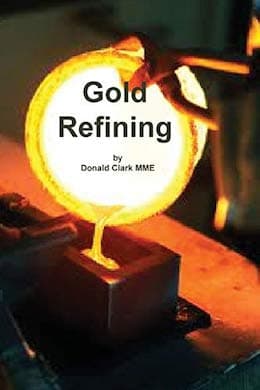
avail from eBay, AbeBooks, or Amazon

avail from eBay, AbeBooks, or Amazon
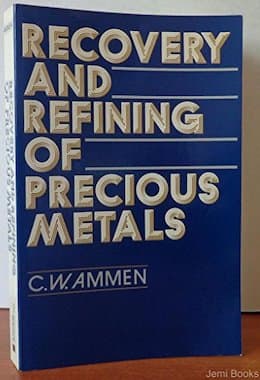
avail from eBay, AbeBooks, or Amazon
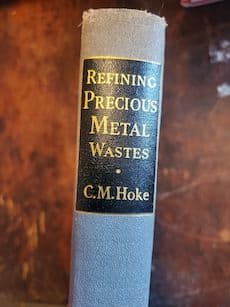
avail from eBay, AbeBooks, or Amazon
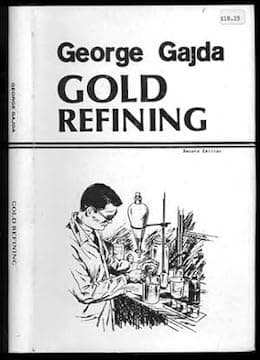
avail from eBay, AbeBooks, or Amazon
(as an Amazon Associate & eBay Partner, we earn from qualifying purchases)
Q. I am about to embark on scrap circuit board recycling, primarily for the gold and platinum content. I am about to set myself up with an acid solution [aqua regia], that dissolves the precious metals, but is very dangerous to handle. It was recently brought to my attention that I could use a rectifier and salt solution to dissolve the metals , where a ceramic cell of some kind in the vat prevents the gold from transferring itself , and remains suspended until another chemical is added which causes the gold or platinum to solidify and sink to the bottom. I would appreciate some help, as I would like to avoid the messy dangerous route.
Thanks
Allan Chiasson- Bathurst N,B. Canada
2001
A. Recycling gold plated circuit board scrap is not a simple process that can be set up using only e-mail/bulletin board responses.
Hire a reputable consultant who can spend the time showing you processes that will:
1. recover the metals
2. be economical to operate
3. be safe for the operators
4. not violate environmental regulations
You will find that aqua regia or chloride-based electrowinning/refining are not going to work on "raw" scrap.

Bill Vins
microwave & cable assemblies - Mesa (what a place-a), Arizona
2002
A. I have a simplicity refiner from Shor at home and use it to refine karat gold. The alloy is dissolved into a saltwater solution by using either a rectifier or battery charger ⇦ on eBay or Amazon [affil link] (12 v 10 amp+) then the gold is precipitated by adding a powdered chemical (I believe is sodium metabisulfite). The "mud" is collected rinsed and dried and melted back to 999.5+ purity. I know of a guy in the USA who uses one to refine the amalgam he gets from stripping the gold plating off circuit boards.
hope this helps.
Regards
Jeremy
- United Kingdom
2003
A. YOU NEED A HIGH CURRENT, LOW VOLTAGE UNIT FOR ELECTRODEPOSITION, A SOLUTION OF GOLD CHLORIDE, A FIBERGLASS OR CERAMIC SINK (BLANK ALL METAL), AND TWO WEEKS OF THEORY, SAFETY IN HANDLING, AND PROTECTIVE CLOTHING. I AM SENDING YOU A SCHEMATIC FOR THE UNIT. GOOD LUCK. HAVE FUN !
2.5 V, 20 A. CIRCUIT FOR ELECTROPLATING
http://www.maxim-ic.com/appnotes.cfm/appnote_number/2040/ln/en ⇩
PRODUCTS SOLUTIONS DESIGN APPNOTES SUPPORT BUY COMPANY 50W Current-Mode Forward Converter Design with the MAX8540 This application note details the design of a 50-watt, isolated, forward converter, using the MAX8540 synchronizable, high-frequency, current-mode PWM controller. Design procedures for both the power stage and controller are presented, along with actual performance measurements. The converter delivers 20 A of Load current at an output voltage of 2.5 V. It employs synchronous rectifiers for secondary rectification. The input voltage range for the converter is 36-75 VDC. This design is available as an evaluation board. The evaluation board demonstrates how easy it is to implement the features network and telecom applications require. The design methods can easily be adapted to the design of high performance, full featured off-line power supplies. Key features: 300 kHz switching frequency, Programmable input UV/OV Protection Programmable hiccup current limit or latch mode overcurrent protection, Programmable maximum duty cycle clamp with feedforward, Programmable slope compensation with single resistor, Synchronization to external clock, Adjustable current limit threshold, Active low-enable feature for easy turn on/off of converter, Internal leading edge blanking on the current sense pin, Output overvoltage protection Space-saving 16 pin QSOP. Description of Application Circuit Operation Figure 1 shows the circuit diagram of a 2.5 V, 20 A isolated forward converter that uses the MAX8540 current mode controller (U1). At startup, the total capacitance at the Vcc pin is charged through MOSFET Q7 and the parallel combination of resistors R30 and R22 from the dc input voltage VIN. When Vcc exceeds the undervoltage lockout threshold of the MAX8540, it goes through the soft-start mode and pulses of gradually increasing duty cycle are applied to the gate drive IC, U8. The MOSFET Q1 therefore starts to switch the input DC voltage across the power transformer T1, used to provide isolation and to step down the input DC voltage to the required level. (Selection of power transformer turns ratio is dealt with in the following section.) Since the energy for driving Q1 comes from the capacitance at Vcc, the Vcc voltage falls. The hysteresis of the MAX8540 undervoltage lockout feature allows this to happen. Pulses on the bias winding of transformer T1 are rectified by D1, regulated, and applied to the Vcc pin. The rectified and regulated bias circuit voltage builds up and prevents the Vcc pin from falling below the undervoltage lockout threshold. The primary side control continues to operate from the bias winding. The MAX8515 (U2) is configured to sense the Vcc pin and turn off Q7 at a voltage slightly higher than the worst-case startup voltage for U1. This avoids unnecessary power dissipation in Q7, R30, and R22. Figure 1. Circuit diagram of 2.5 V, 20 Amp, Isolated Current mode Forward Converter using the MAX8540.
Cheaper to build, and, Oh, might learn something new.
Paul T. Knisely- Kenmore, Washington
2003
Ed. update: The above link is broken. Thankfully, the Internet Archive preserved a copy here ![]()
Please consider a donation to The Internet Archive. Don't follow abandoned links, old URLs are sought out by hackers!
![]() Hey, thanks for all the response to my thread. I have not yet used any method posted, as I am still collecting gold scrap and squirreling it away. Aqua regia, is still my first choice for the simple reason that I only harvest clean gold, free from any circuit boards or other contamination, except what the gold is plated with. Any further input on this would be appreciated.
Hey, thanks for all the response to my thread. I have not yet used any method posted, as I am still collecting gold scrap and squirreling it away. Aqua regia, is still my first choice for the simple reason that I only harvest clean gold, free from any circuit boards or other contamination, except what the gold is plated with. Any further input on this would be appreciated.
- Penticton B.C., Canada
2007
A. A site called "SREETIPS" on you tube has many videos that are incredibly informative on the subject. He shows values recovered and post processing too. Very well respected.
J Wells- Palestine, Texas
December 30, 2023
Want easy removal of precious metal from cathode
Q. I am looking for a way to use precious metals as anode to deposit on cathode and easily be removed off cathode. I am interested in different, readily and cost effective (aqueous) procedures in electrolysis. Thanks for all answers and time helping me.
Shawn Park- Appleton, Wisconsin
2004
A. All you need is a "passive" cathode. Stainless steel is probably adequate. Copper foil is routinely fabricated by electroplating copper onto a stainless steel belt and then separating them; the same idea should work for precious metals.

Ted Mooney, P.E.
Striving to live Aloha
finishing.com - Pine Beach, New Jersey
Ted is available for instant help
or longer-term assistance.
2004
Scrap recovery using Aqua Regia
Q. Scrap recovery using Aqua Regia. I also do scrap recover as a hobby and for learning the silver and gold work fair in this process but we have no luck in the recovery of platinum from catalytic convertor honey combs can anyone please comment on this.
Eddie Kiswani- Chicago, Illinois
2003
A. Hi Eddie,
The book I'm reading uses sodium sulfite for the precipitation of Gold. At the end of there is an article describing Platinum recovery. If you'll share, where are you finding Platinum?
Extracted from a link:
Platinum-
If you had platinum in your gold, it will not dissolve, to any appreciable degree, in the room temperature aqua regia. It will be left behind when you pour off the aqua regia, prior to precipitation. To insure high purity of the platinum, you will need to re-refine this material. Put this material in a fresh aqua regia bath. This time, however, heat the acid to simmering. Continue heating until all the platinum is dissolved (that may take 1-2 hours). When completely dissolved add 1 ounce of ammonium chloride for every ounce of dissolved platinum. The platinum will precipitate as a red mud. If you want to leave the iridium in the platinum, then wait for it to precipitate before recovering the platinum. Iridium will precipitate as a blue-black mud after the platinum precipitates. Platinum group metals will also show up on the stannous chloride test. Platinum turns red, palladium turns orange and iridium turn blue-black.
Good Luck,
Scott Rae- Harare, Mashonald, Zimbabwe
A. Hello Eddie, as a chemist working in the recovery of precious metals from electronics scraps I advise you to keep away from the aqua regia process. It's very dangerous because of it's toxic fumes and time expensive. Furthermore, the aqua regia process attacks the resins of the boards compounds leaving you with an insoluble mud. In fact, most of the operators in this sector prefer to use a basic process composed of cyanide (2% solution) and other components. This process is safer because there are no toxic gas involved, as long you take care not to originate some hydrocyanic gas. Search for literature on this matter.
I can only tell you that the process I have developed, based on cyanide, recover all precious metals from any board in about 15 minutes time. Unfortunately I can't give you other indications, it's a company secret. Good luck
Oscar Gagliardiscraps treatment - Sevilla, Andalucia, Spain
A. Hi Eddy
If you live in the USA and you want to use the (process composed of cyanide (2% solution) and other components) that the guy from Spain recommended. You will find that there are tons of environmental laws concerning the use of cyanide leach. I have chatted with several people on a few forums that are using AR and they are recovering the gold. They work outside so the fumes won't cause problems. Do your home work on it before messing with it because it is dangerous if you don't know what you are doing with it. Shor International has a page that describes the process and they have a list on the site of tools and safety tools.
Rob Harvey- Scottsboro, Alabama
A. I agree that the Cyanide treatment is a lot more hazardous than the AR method. Cyanide will kill you in 15 minutes or less, it takes less than 1 teaspoon of 2% cyanide solution to cause death. Also you will have toxic waste compared to the Aluminum Hydroxide that you can turn your AR into which has relatively no impact on the environment.
If you aren't careful working with acids they can kill you also but, with a little common sense you will be safer (do it outside). I developed a fume abatement apparatus for my lab out of PVC piping, some sealed plastic buckets and an air compressor
[adv: air compressors on
eBay
or
Amazon [affil link] . The fumes that are lighter than air rise out on their own and if the condense on the way out to the exhaust system (about 8 ft) then they fall into an acid collection container. If they are heavier then when I use the pump to push the fumes off they run through the activated carbon filter and fall into the acid condensing tank. I don't remove this tank for about a week to allow the acids to turn into a liquid then I neutralize them and dispose of them properly.
With a little time you can figure out how I made this as I sell the plans in my online stores and sometimes on auction sites. I am not going to attempt to advertise here as this is an informative site which I have a lot of respect for!
THE POINT IS DO NOT UNDER ANY CIRCUMSTANCES USE CYANIDE IN THE US. MINES MAKE ENOUGH POLLUTION WITH IT ALREADY!
- Bellwood, Pennsylvania
A. Shawn,
Cyanide can be destroyed using sodium hypochlorite (bleach). As long as you neutralize the cyanide before you dispose of the waste water (into the nearby crystal clear mountain stream crammed full of salmon) then I don't see what the fuss is all about.
See this page on how to do that:
www.shorinternational.com/cyanodestruct.htm ⇩
- Eugene, Oregon
2006
Ed. note: That URL no longer directs to the proper page; a better URL is probably www.ishor.com/detoxification-of-bombing-solution-wastes-containing-cyanide-ion
A. You're certainly welcome to voice your opinion, Alan, and we thank you for it. But if you don't understand the fuss, please listen to the other side 🙂
Neutralization of cyanide waste is NOT trivial. A man in a local retirement village here died doing so in the last couple of years. Sewer workers have died as a result of such disposal. 6 employees in a plating shop in Indiana (Bastion Plating) died some years ago, and numerous individual workers since. First responders have refused to treat heart attack victims, believing they ingested cyanide.
Without careful pH control, not only will the salmon be dead from cyanogen chloride, but perhaps some people as well. And once the cyanide has complexed with nickel or iron, you can't destroy it with alkaline chlorination anyway. It amazes me that the government demands that any employee who works with this must receive annual professional safety training; but hobbyists, dealing with larger amounts under far more dangerous circumstances -- no co-workers, no one with a Scott air-pak, no MSDS available to first responders in a mailbox outside the building, no registration with the hospital so antidotes are on hand -- feel that a paragraph of internet advise from a stranger (whose name is often fictitious) is the only education they need when working with an instantaneous-acting, airborne poison like hydrogen cyanide.

Ted Mooney, P.E.
Striving to live Aloha
finishing.com - Pine Beach, New Jersey
Ted is available for instant help
or longer-term assistance.
A. (From Gemini AI:)
Can one electrostrip pure platinum in an electrolyte of ammonium chloride or other formulation?
Here's a breakdown of how it works and what to consider:
Why Ammonium Chloride?
Formation of "Slime": In an ammonium chloride electrolyte, during the electrolytic process, platinum group metals react to form ammonium chloride platinum group salts. These salts are often described as a "slime" or metallic mud that falls from the anode.
Buffering Effect: Ammonium chloride can help maintain a relatively neutral pH in the solution due to its buffering properties.
Selective Separation: The key advantage is that while base metals will dissolve in the ammonium chloride solution, the platinum group metals are converted into these less soluble ammonium chloride salts, allowing for their separation.
Subsequent Recovery: Once the "slime" is collected, it can then be treated with ammonium hydroxide to dissolve the platinum group ammonium chloride salts. From this dissolved solution, pure platinum can then be recovered using known selective precipitants like hydrazine.
General Electrochemical Stripping of Platinum:
Difficulty: Platinum is highly resistant to dissolution because of its high ionization electric potential.
Electrolyte Importance: The choice of electrolyte is crucial. Chloride-containing electrolytes (like those involving hydrochloric acid or potassium chloride) are often used for platinum dissolution, as chloride ions can promote the formation of platinum chloride complexes, which are more soluble.
Conditions:
Voltage and Amperage: Direct current is applied. Specific voltages (e.g., 10-15 volts) and amperages (e.g., 15-25 amps) can be employed to control the dissolution rate. Higher amperages generally lead to faster dissolution of base metals.
Temperature: Elevated temperatures can facilitate the dissolution process.
Polarity Changes: Some methods for extracting platinum group metals from waste catalysts involve regularly changing the polarity of the electrodes to enhance leaching.
Mechanisms: Platinum dissolution can occur through various electrochemical mechanisms, often involving the formation and reduction/stripping of platinum oxides or the formation of stable platinum complexes with anions in the electrolyte.
Important Considerations:
Purity: The goal of electrostripping often relates to refining or recovering platinum from alloys or waste materials. The purity of the starting platinum and the desired purity of the stripped platinum will influence the process.
Safety: Electrochemical processes, especially those involving strong acids or bases and generating gases, require proper ventilation and safety precautions.
Waste Management: The resulting solutions and "slimes" will contain dissolved metals and chemicals, requiring appropriate waste treatment and disposal.
In summary, while platinum is a noble metal, it can be electrostripped, and ammonium chloride offers a viable and advantageous electrolyte for this purpose, particularly in the context of refining platinum group metals by forming intermediate, separable salts.
What platinum compound is formed by treating the platinum slime mud with hydroxide that you described?
When the platinum-containing "slime" (which is primarily ammonium chloroplatinate, (NH4)2PtCl6) is treated with ammonium hydroxide (NH4OH), the goal is to dissolve these platinum salts.
The ammonium hydroxide acts as a base and also provides additional ammonia ligands. In this context, the ammonium chloroplatinate will dissolve to form a soluble platinum-ammonia complex. The most common and stable such complex of platinum(II) (which is the oxidation state usually involved in these recovery processes after initial dissolution) is tetraammineplatinum (II) chloride, [Pt(NH3)4 ]Cl2, or more generally, tetraammineplatinum(II) hydroxide, [Pt(NH3)4](OH)2, if the hydroxide is in excess.
Here's why:
Ammonium Chloroplatinate ((NH4) 2PtCl6 ): This is a relatively insoluble yellow precipitate.
Ammonium Hydroxide (NH4OH): In solution, this provides ammonia (NH3) and hydroxide (OH-) ions. Ammonia is a strong ligand for platinum.
Formation of Tetraammineplatinum(II) Complex: Platinum, especially in its +2 oxidation state, readily forms stable complexes with ammonia. The chloride ligands in the ammonium chloroplatinate are replaced by ammonia ligands from the ammonium hydroxide. The overall reaction can be simplified as:
(NH4)2PtCl6(s) + 4NH4OH(aq) > [Pt(NH3)4]Cl2(aq) + 2NH4Cl(aq)+4H2O(l)
(Note: The ammonium chloride formed will likely remain in solution, and depending on the exact conditions and concentrations, some hydroxide might also coordinate if excess OH - is present).
This soluble tetraammineplatinum(II) complex is what allows for the separation of platinum from other impurities that may have been present in the initial "slime" or dissolved in the ammonium chloride electrolyte. Once dissolved, the platinum can then be selectively precipitated as a pure platinum compound (often back to a more refined form of ammonium chloroplatinate or directly to platinum metal) using specific reducing agents or precipitants, as mentioned in the initial response.
Will any of the water soluble platinum compounds you described reduce as pure platinum at a cathode when voltage is applied. Or can one of them be converted to P salt?
Yes, both scenarios you described are possible and are common steps in platinum refining and electroplating processes:
Reduction of Water-Soluble Platinum Compounds to Pure Platinum at a Cathode (Electrodeposition):
The tetraammineplatinum(II) chloride, [Pt(NH3)4]Cl2, which is formed by treating the platinum "slime" with ammonium hydroxide, is indeed a water-soluble platinum compound that can be reduced to pure platinum metal at a cathode when voltage is applied. This process is known as electroplating or electrowinning of platinum.
Mechanism: At the cathode (the negative electrode), platinum ions (or complex ions) in the solution gain electrons and are deposited as solid platinum metal. For [Pt(NH3)4]2+, the reaction would be:
[Pt(NH3)4]2+ (aq) + 2e - > Pt(s)+4NH3 (aq)
Conditions:
Electrolyte: The solution containing the platinum complex.
Current Density: The rate of deposition is controlled by the current density.
Temperature: Elevated temperatures are often used to improve conductivity and deposition quality.
pH: The pH of the electrolyte is crucial for stable complex formation and efficient deposition.
Additives: Other chemicals might be added to the bath to improve the quality, brightness, and adhesion of the deposited platinum layer.
This is a standard method for obtaining high-purity platinum or for applying platinum coatings.
Conversion to "P Salt":
Yes, the water-soluble platinum compounds, including the tetraammineplatinum(II) chloride, can be used as precursors or directly converted to "P salt."
"P Salt" (Platinum P Salt) is a common commercial name for diamminedinitroplatinum(II), which has the chemical formula [Pt(NH3)2(NO2)2]. It is widely used in the electroplating industry for depositing platinum coatings.
Conversion: While you have [Pt(NH3 )4]Cl2
after dissolving the slime, converting it to "P salt" typically involves a reaction where some of the ammonia ligands are replaced by nitrite (NO2) ligands. This often involves reacting a suitable platinum precursor (like a tetrachloroplatinate or even the tetraammine complex) with nitrite ions in the presence of ammonia. For example, some methods involve starting from hexachloroplatinic acid, reducing it to tetrachloroplatinum(II) acid, and then performing ammoniation and nitration steps.
Why convert to P Salt? "P Salt" is highly favored for electroplating because it forms stable plating baths that produce bright, adherent, and low-stress platinum deposits. It offers better control over the plating process compared to some other platinum precursors like chloroplatinic acid, especially for heavier deposits.
In summary, the platinum compounds you described are versatile intermediates. They can either be directly reduced electrochemically to yield pure platinum or further processed (e.g., converted to "P salt") to optimize subsequent platinum recovery or electroplating operations.
electroplater of 37 years - Claymont, Dwlaware
July 1, 2025
Q. I am interested in the method of gold recovery from electronic scrap using a salt solution and a high current DC source (both of which I have available). Can anyone tell me more or exactly how to go about it? Does it leave the copper, lead and tin behind or are there more steps to the process?
Also, does anyone here have experience using Butyl Diglyme in recovering gold from acid solutions?
- Hamilton, Ohio
2005
A. Butyl Diglyme, available from FERRO and others, takes a bit of getting used to, but delivers 99.9 Gold as a final product.
Route is not too difficult.
Dissolve gold with straight HCl or HC + Chlorine (use fume hood or stay upwind outside...serious fumes)
In a separatory funnel, pour the strained HCl- Gold Chloride.
Add 1/4 measure or volume of Butyl Diglyme. Agitate until all the gold has transferred to the BD.
Separate out the stripped water/HCL portion.
Rinse and repeat until aqueous portion is clean.
Pour the Butyl Digyme portion into a heatproof beaker [beakers on
eBay
or
Amazon [affil link] , place over warm heat,on a sand-filled pan. Add a small amount of Oxalic acid, dissolved in DI water, gently heating to simmer.
The gold will form clean flakes and fall out as it precipitates.
Alternate procedure once you have separated the Butyl Diglyme portion is to add H2O2 to precipitate.
Results may be melted with a bit of borax flux in a crucible by torch or furnace to solidify to a 99.5 % Gold button.
Butyl Dyglyme can be strained thru a coffee filter to clean it, and used endlessly, over and over.
- Lehi, Utah
Q. I just happened upon butyl diglyme as a solvent extraction for gold. I'm wondering if butyl diglyme would be a suitable substitute for diisobutyl ketone? ⇐ answer?
Jim OlesonChemist - Fairbanks, Alaska
September 23, 2008
!! I really cannot believe that NO-ONE knew of a feasible cheap way to reclaim gold and Platinum from circuit boards. In order to do so cheaply you need an exhausted gold bath and an exhausted platinum bath and a rectifier. You also need the type of electrode used to initially put the platinum ions into the bath, The concept is to put a Positive high voltage low current bias on the metal you want stripped of platinum or gold in the correct bath, the positive ionizes the gold or platinum and the electrolyte simply maintains the metal ions in liquid form.
Now, off hand I don't know what electropositive metal is currently used for Platinum as this is a trade secret, but I suggest trying beryllium as the negative cathode. Good Luck all you scrappers!
Lawrence A Cronce
- Stevens Point, Wisconsin
2006
The anodes for gold & platinum plating are typically platinized titanium, so that material can certainly be used as the cathode in the setup you are describing -- but stainless steel is usually good enough, depending on the particular plating bath. Note, though, that platinum does not deplate from these platinized titanium anodes, so I don't share your confidence that platinum will deplate from the scrap.
Thanks again.

Ted Mooney, P.E.
Striving to live Aloha
finishing.com - Pine Beach, New Jersey
Ted is available for instant help
or longer-term assistance.
Basically what we have is a small surface area of Platinum that you wish deplated, and you put this into an electrolyte which is known to be able to hold platinum, typically alkaline. The Platinum anode would in a chunk of scrap circuit board be at say 100 volts in the hull cell rectifier. The Cathode, however would have a surface area 1000 times larger. Hence the voltage on the cathode is .1 volts. This voltage while it allows deplating on the anode scrap, does NOT allow replating on the cathode. Hence the electrolyte charges with pure platinum! This in turn can be used to electroplate ANY hunk of metal with pure platinum. My consideration here is that you can do this method selectively and in the correct order bathing the circuit board in consecutive baths of differing electrolytes to recover one metal at a time in the nearly pure form in an electroplating solution for making extra money via electroplating articles of an metal type with virtually any metal. Thus you are saved the problem of selling scrap metal which MUST be assayed before it can be sold for anything near what it is worth.
Now, a further note is that EVERY electrolyte that can hold a metal ion will work for these systems, either in recovering metal in the nearly pure form to making electroplating solutions in the nearly pure form.
You might be able to use an electroplating solution a thousand times before it finally will not do an excellent job of electroplating! Simply recharging it off of scrap.
Now, you may comment again sir.
Lawrence A Cronce
- Stevens Point, Wisconsin
![]() I'm not familiar with this high voltage method for stripping platinum, so thank you!
I'm not familiar with this high voltage method for stripping platinum, so thank you!
But if the voltage is 100 volts on the cathode, it's 100 volts on the anode no matter the size of either. Voltage is voltage, irrespective of surface area.
Good luck.

Ted Mooney, P.E.
Striving to live Aloha
finishing.com - Pine Beach, New Jersey
Ted is available for instant help
or longer-term assistance.
|
|
A. In response to:
A. Hi, Sam. If you get a chance, please take a look at the discussion between Humpty Dumpty and Alice in Lewis Carroll's "Through the Looking Glass", where Carroll reminds us it's just silly it is to attempt a discussion if the participants assign their own meaning to words. The first step against confusion & obfuscation is recognition that words must be used with accepted and consistent meanings. Voltage, current, power, energy, current density and so on all have established scientific meanings, which let us relate them to each other and to advance the science via Ohm's Law,Faraday's Law, etc. -- so it is "relevant" to point out when terms are used in a fashion which will lead to erroneous conclusions. |
 OMG (cringe, cringe), I doubt I am the only one praying none of these "hobbyists" live in my town/watershed.
OMG (cringe, cringe), I doubt I am the only one praying none of these "hobbyists" live in my town/watershed.
Great candidates for a Darwin Award though...
https://www.darwinawards.com/
...suspect there's a good chance for at least Honorable Mention here, regardless.
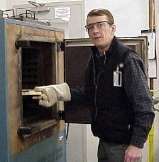
Thomas Hanlon, Materials Engineer
aerospace finishing - East Hartford, Connecticut, USA
2006
1 2
Q, A, or Comment on THIS thread -or- Start a NEW Thread
